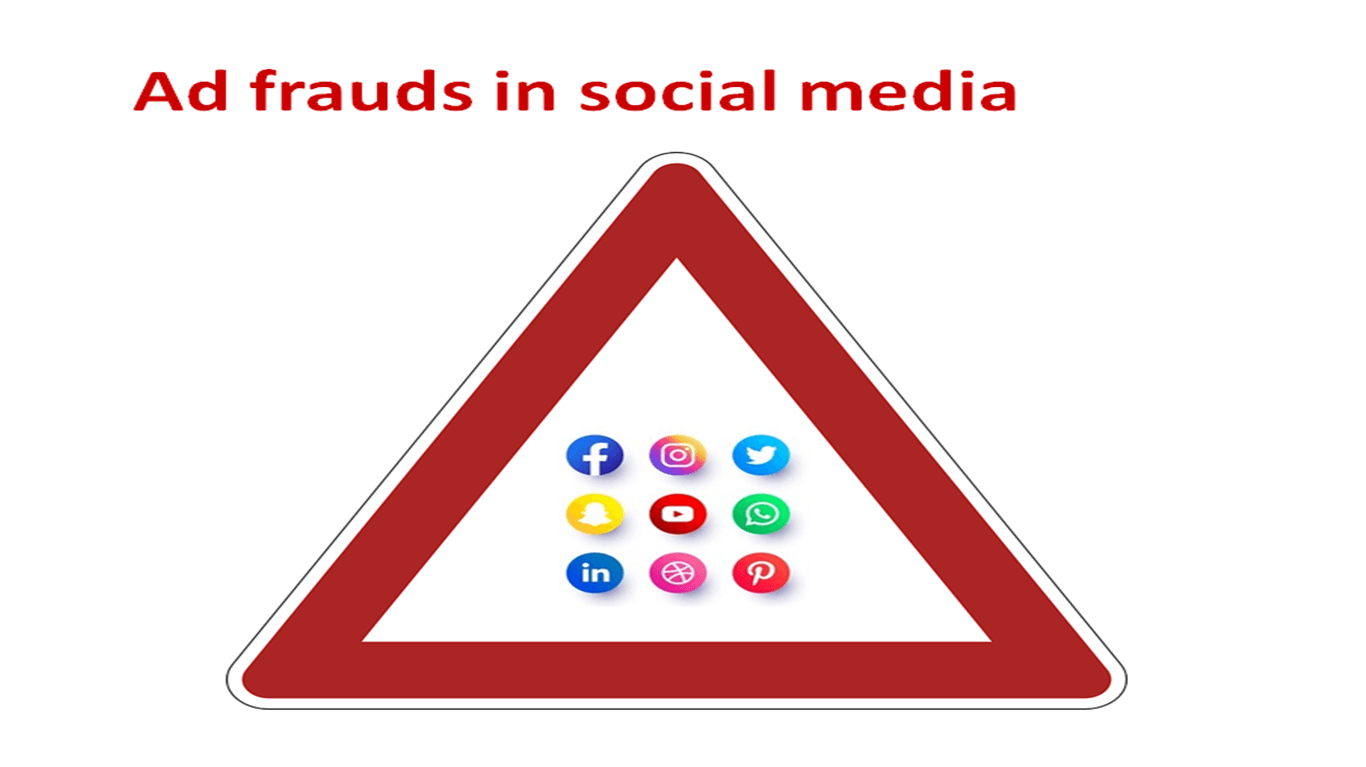Ad frauds in social media

source: own elaboration
According to the IAB / PwC adex research for 2020, 17.2% of all funds spent on internet marketing was allocated to advertising in social media. Let us add that they totaled over PLN 5 billion annually, so in 2020 advertisers left in social media over PLN 860 million. The developing functionality of websites such as YouTube, Facebook, Instagram or Twittter causes there are many people willing to invest in these marketing channels. Unfortunately, this also means that there will also be scammers willing to take advantage of this potential. What ad scams should we be particularly careful while advertising our products or services on social media? We will present this issue in the text below.
According to NEWSPO!NT, in 2019 the number of internet users in Poland exceeded 28 million, and as many as 18 million of them used social media. The most popular of them, such as YouTube or Facebook, had more than 17 million users, and Instagram, which was already oscillating at the level of 7.4 million users, has grown in popularity since then. No wonder that such a group of recipients, which can be additionally targeted in great detail, is a tasty treat for advertisers, but not only for them. Such high popularity of social media also motivates fraudsters.
Frauds related to the distortion of statistics
One of the first frauds that appeared in social media were those involving interference in statistics - especially those constituting the basis for settlements with a specific platform. In the case of ads designed to attract potential customers to a given page, we may be seeing your competitors clicking on your ads. Your business rival can click your ads manually or use BOTs, i.e., automated algorithms that mimic the behavior of Internet users. The statistics distorted by such scams can be a serious problem when examining the effectiveness of a campaign, and additionally generate costs for advertisers and lower the conversion rate of given advertising activities.
Purchased traffic
Of course, it may also happen that a given brand wants to consciously increase its statistics. In such cases, we are dealing with the purchase of specific manifestations of activity. Services of this type are offered by click farms or like farms. For example, you pay between $ 3 and $ 8 to get 1,000 followers, one fake comment or rating costs around 12 cents, and the price of a thousand likes varies from $ 4 to $ 9.
Fake comments, opinions and ratings
The above-mentioned buying or issuing untrue comments, opinions and evaluations may be twofold. The fraudster may speak positively about his profile, products or services, or act to the detriment of the competition.
False influencers
Influencers have been particularly popular among marketers for some time now - using them in a campaign can be a great strategy, but you need to be careful. British advertising agency MediaKix proved in its study how easy it is to create a fake influencer and trick advertisers. In her experiment, 2 fake influencer profiles were set up - one dedicated to travel and led by a photographer, and the other about fashion and lifestyle allegedly belonging to a model. Appropriate content was added to the fake profiles, but most of all, the agency was gradually buying followers, likes and comments. In total, Mediakix spent about a thousand dollars on false manifestations of traffic, and the first cooperation offers began to arrive when the profiles had about 10,000 followers.
Counterfeit profiles of famous brands
Every famous brand has official social media accounts, but some of them, in addition to the real ones, also have a lot of fakes. Fraudsters use them to sell counterfeit products or collect personal data of users in contests organized on them - „fill in and get a sample”, „lottery on the occasion of the 35th anniversary of the brand’s existence”, etc. Fraudsters impersonating large, recognizable companies gain credibility in the eyes of consumers who are more willing to provide information about themselves. How to know which profile is fake? Although in such cases the name, graphics and content published on the profile will be very similar or identical to those on real accounts, fakes can be identified primarily by a relatively small number of followers and reaction to specific materials. Also large, well-known brands often have a blue symbol next to their name - it means that the account has been verified.
Great deals
Another type of scams in social media are super offers seemingly from well-known brands. An example of such frauds may be „Big Sale” or „Airing the warehouse” during which well-known products are offered with a huge discount. It is worth adding that under such events, false comments are often added from satisfied customers who allegedly used the offer. And what happens to those who are tempted by such an announcement? If we’re lucky, the scammers will only steal our personal details, but it is possible that our account will be wiped. Fraudsters who have obtained relevant information about our payment card may charge it with much higher amounts than those from the advertisement. Additionally, viral messages may be sent automatically from our profile.
Of course, this type of fraud is a threat not only to Internet users, but also to the brand itself. Users who have fallen victim of scammers may not be aware that the company wasn’t actually behind such a scam. So it happens that they blame an unaware brand. The very fact that the brand was used for a scam is also important - it evokes negative associations and may have a negative impact on the company’s image.
Infected applications
For some time now, social media has been flooded with a wave of applications that offer a whole range of attractions in exchange for access to device functions. Thanks to this, fraudsters not only collect personal data, but also take control of a given hardware by introducing malware (viruses) into it.
The scope of fraud to be considered when using social networks (both as a user and as an advertiser) is constantly growing and we need to be vigilant in order to protect ourselves from them. Fast threat detection can be critical. However, diagnosing and removing the problem won’t always be easy, especially from the company’s point of view. Advanced systems for monitoring and blocking irregularities in traffic obtained in social media are already available on Polish market, and they can be an invaluable help for many companies. If you want to learn more about how to protect your brand in social media - contact us.

